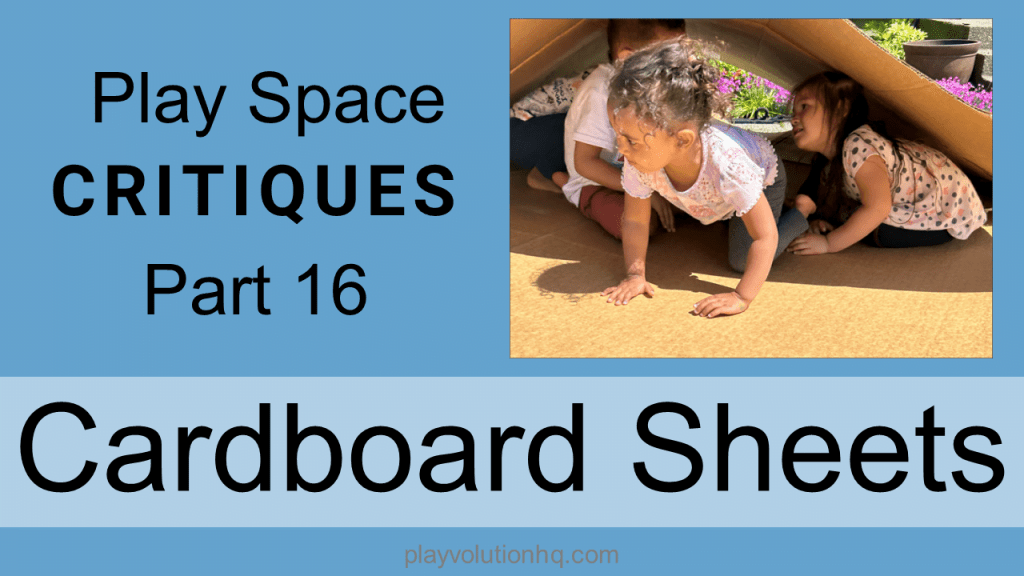
This play space critique takes a squizz at some loose parts play involving cardboard sheets that happened somewhen recently. The following photos and videos were sent my way by Autumn, a family child care provider in the state of Washington. We’ve been corresponding since she attended some of my online trainings. I dig the way she embraces child-led play. Let’s take a look.
GIANT SHEETS OF CARDBOARD! I love their expressions–looks of Excitement, Curiosity, and Purpose. Our busy human brains are drawn to novelty. That’s why loose parts–variables in the environment, according to Simon Nicholson–are so good at sparking play and exploration.
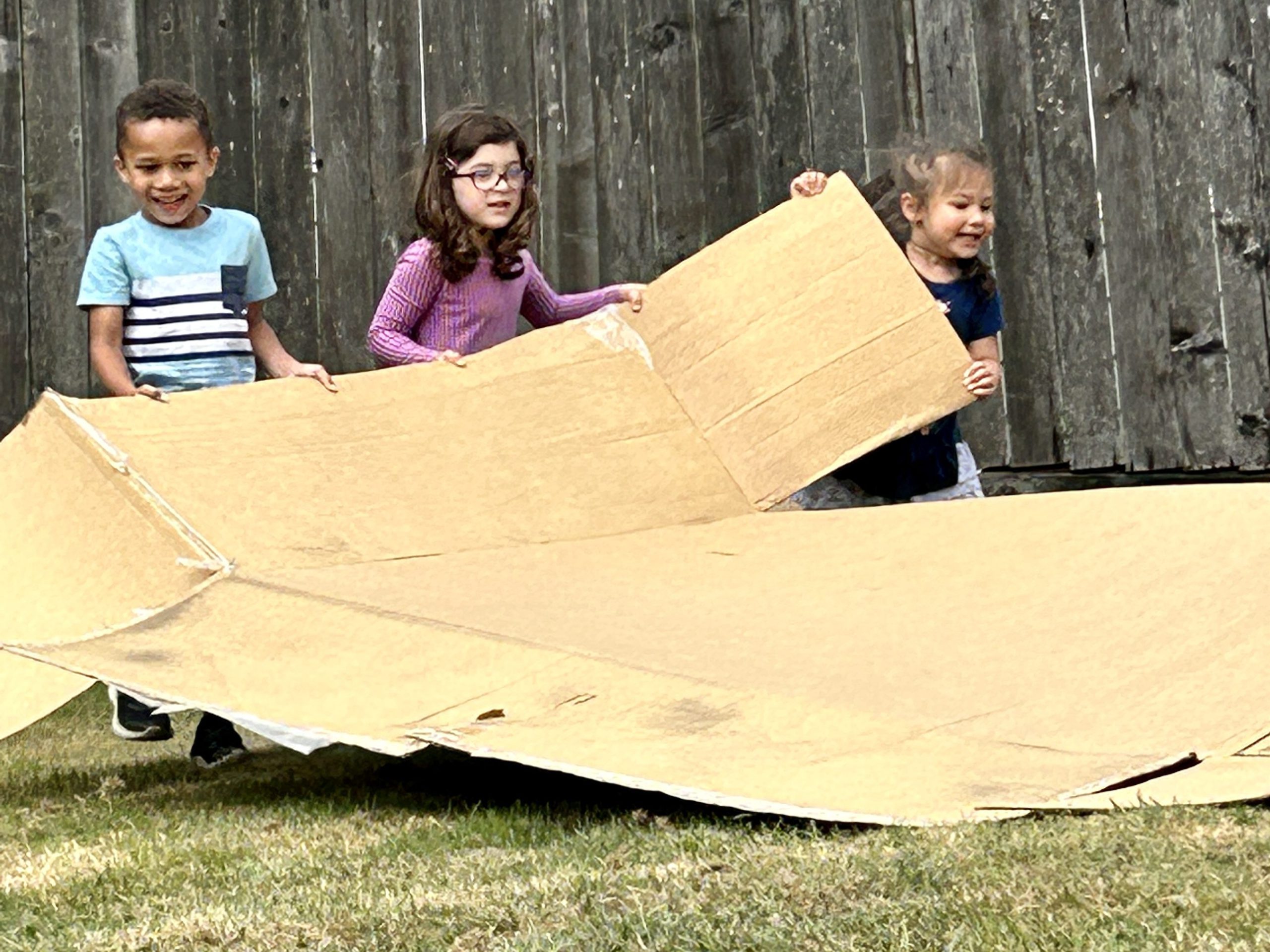
Play with new items like this tend to start with some heuristic play, exploratory play that helps the players get to know the materials. How heavy is it? Can we move it? What does it feel like? Does it bend? Can we fold it? Looks like it takes a bit of cooperation and teamwork to move something so big.
Apparently, cardboard sheets do bend and can be folded!
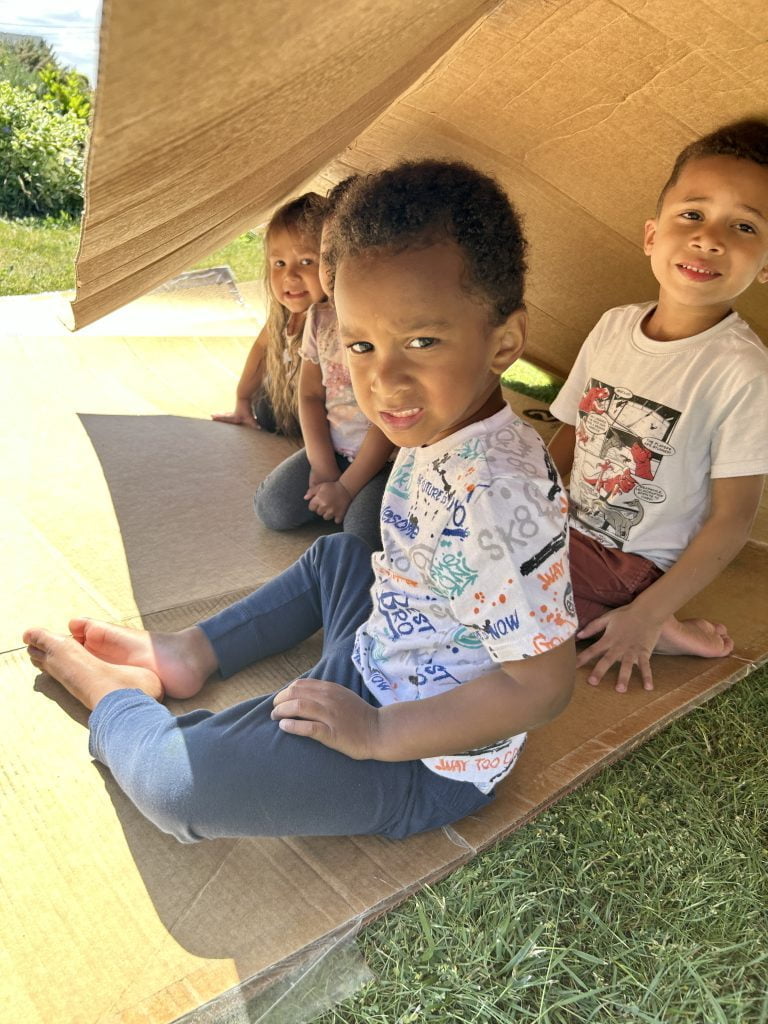
After kids gain some basic understanding of the new item, they look for ways to make use of it. These ideas tend to grow from their current interests, personal experiences, and existing knowledge of the world. Play comes from within the child.
Turns out that cardboard sheets are slippery and can be used as a slide if you find a little hill.

Look at the exploration. Which side of the carpet squares is best for sliding? Do they work better than small cardboard sheets? Would a box work? Also, look at the young child in the back observing the older kids. Let’s zoom in:
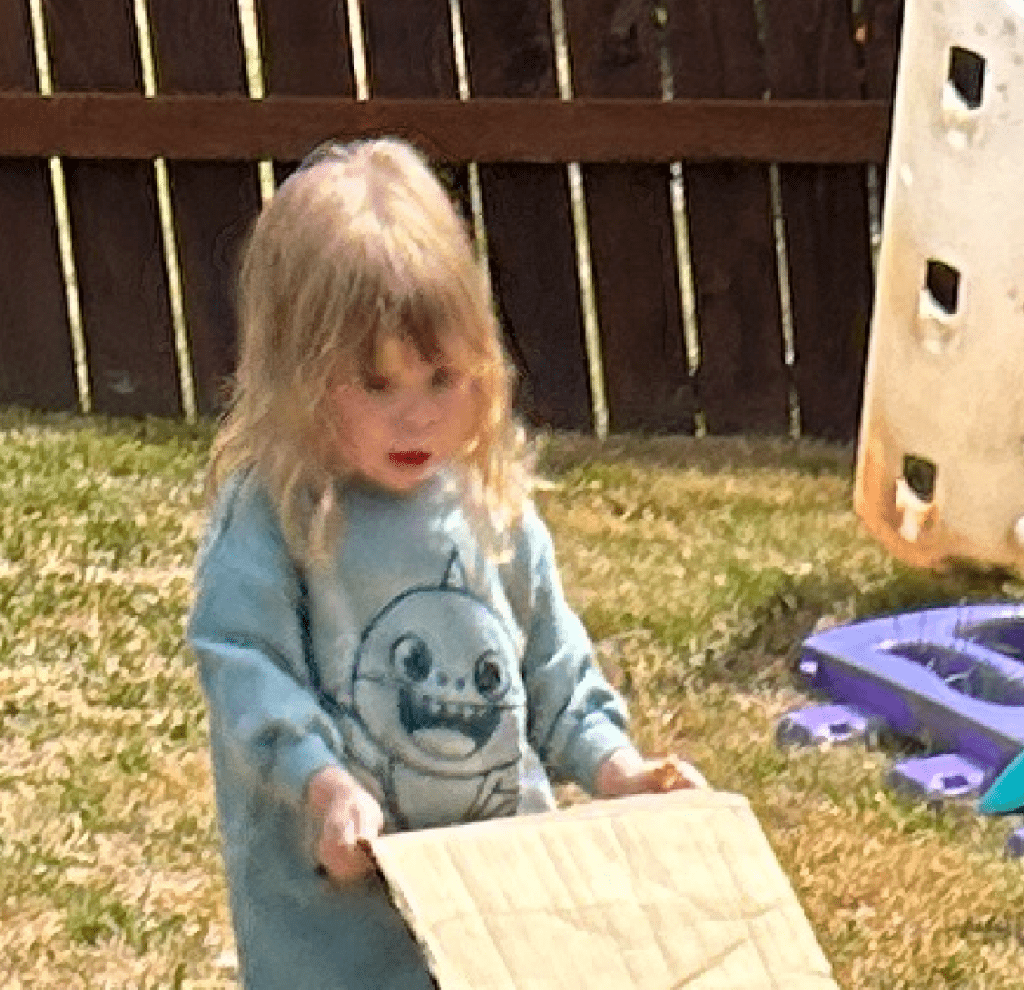
She’s evaluating everything the big kids are doing as she waits for a chance to be part of the action. This is one of the big benefits of mixed-age settings. Younger children benefit from their proximity to more experienced, skilled, and knowledgeable near-pears. Also, cool shark shirt.
Look! A bigger hill.
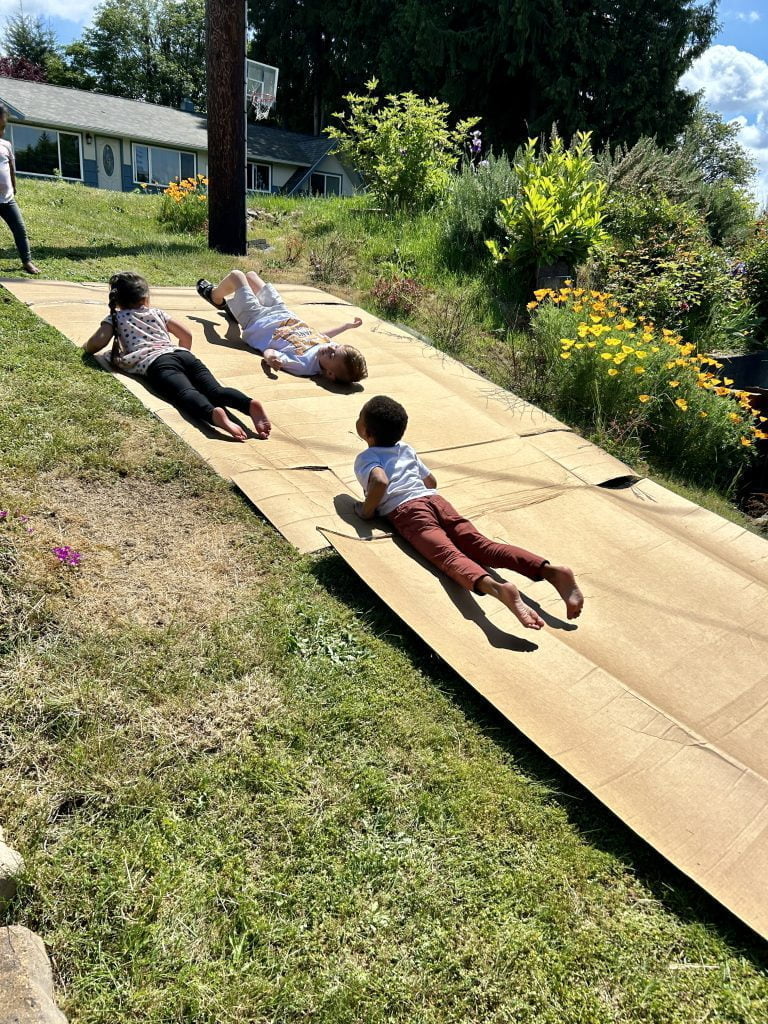

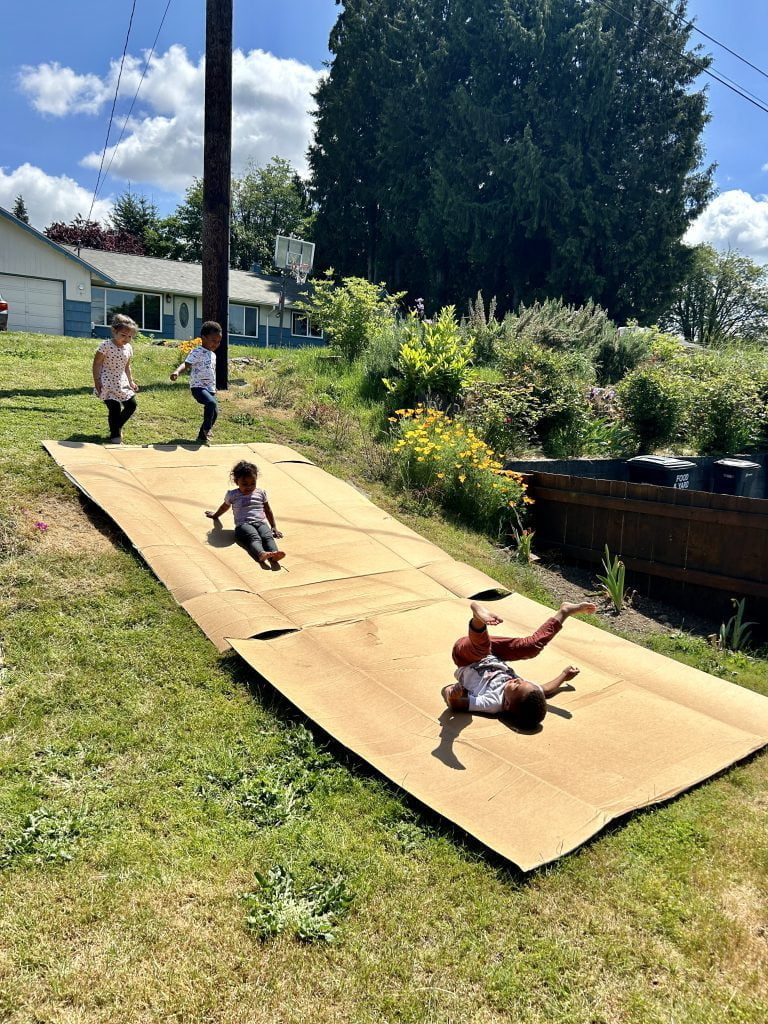
Look at all the heavy work and physical activity. This is great for sensory integration, especially for the vestibular, proprioceptive, and interoceptive systems. To wire their brains and bodies, kids need to move their bodies in complicated ways.
Getting candid shots of kids at play is difficult because someone’s always ready to smile for the camera.
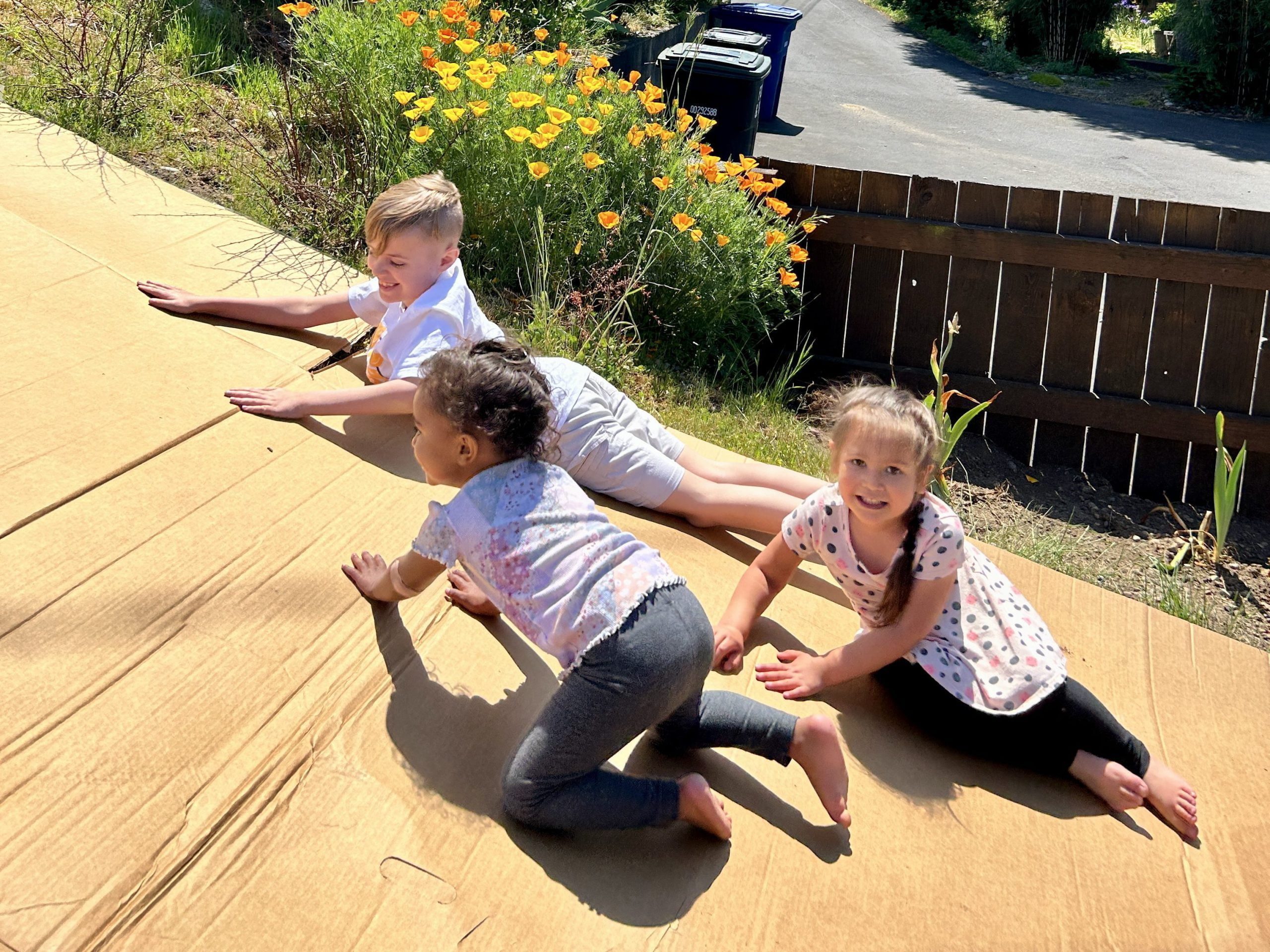
Look at the body language and faces. It’s nice to see kids enjoying themselves. Childhood should come with a bit of fun.
Also, bare feet. Let the went to market piggy and all its friends get some fresh air and sunshine is another way to support sensory integration. Kids can maneuver better without an inch of foam and synthetic rubber between them and the surface.
There’s so much good stuff in this 14 seconds of video. Forget worksheets, flashcards, and adult-led learning activities; this is what school readiness should look like. Before kids can master writing and reading, they have to master their bodies. Play such as this how that happens.
Let’s look at the social and emotional learning cardboard sheets can offer. At 6 seconds in, our little blonde friend from before takes an accidental blow to the head. 2 seconds later, the oldest child checks out the situation. A second or 2 after that, he goes to console her while the other kids look on with concern. Autumn stops recording when he turns to her for support and goes to make sure everything is OK. (Autumn confirmed that young Mirabella lived through the ordeal.)
The interaction is only a few seconds long, but it shows empathy, concern for others, resilience, problem-solving, and leadership. Quite a bit of learning from a couple of big cardboard sheets.
We’ll end with another clip of some sliding fun.
Cardboard Sheets Wrap Up
Loose parts like Autumn’s cardboard sheets are environmental variables that kids can use in creating their own play narratives. Such experiences are rich and dynamic opportunities for kids to challenge themselves, hone skills, and have a bit of fun. The kids in Autumn’s program are lucky to have such opportunities; too many children do not.
Have thoughts on the photos–or thoughts on our thoughts? Share them in the comments. You’ll find more play space critiques here.
Brought to you by Explorations Early Learning
Contribute content to Playvolution HQ
Browse Trainings
Post Author
Jeff Johnson is an early learning trainer, podcaster, and author who founded Explorations Early Learning, Playvolution HQ, and Play Haven.



Leave a Reply